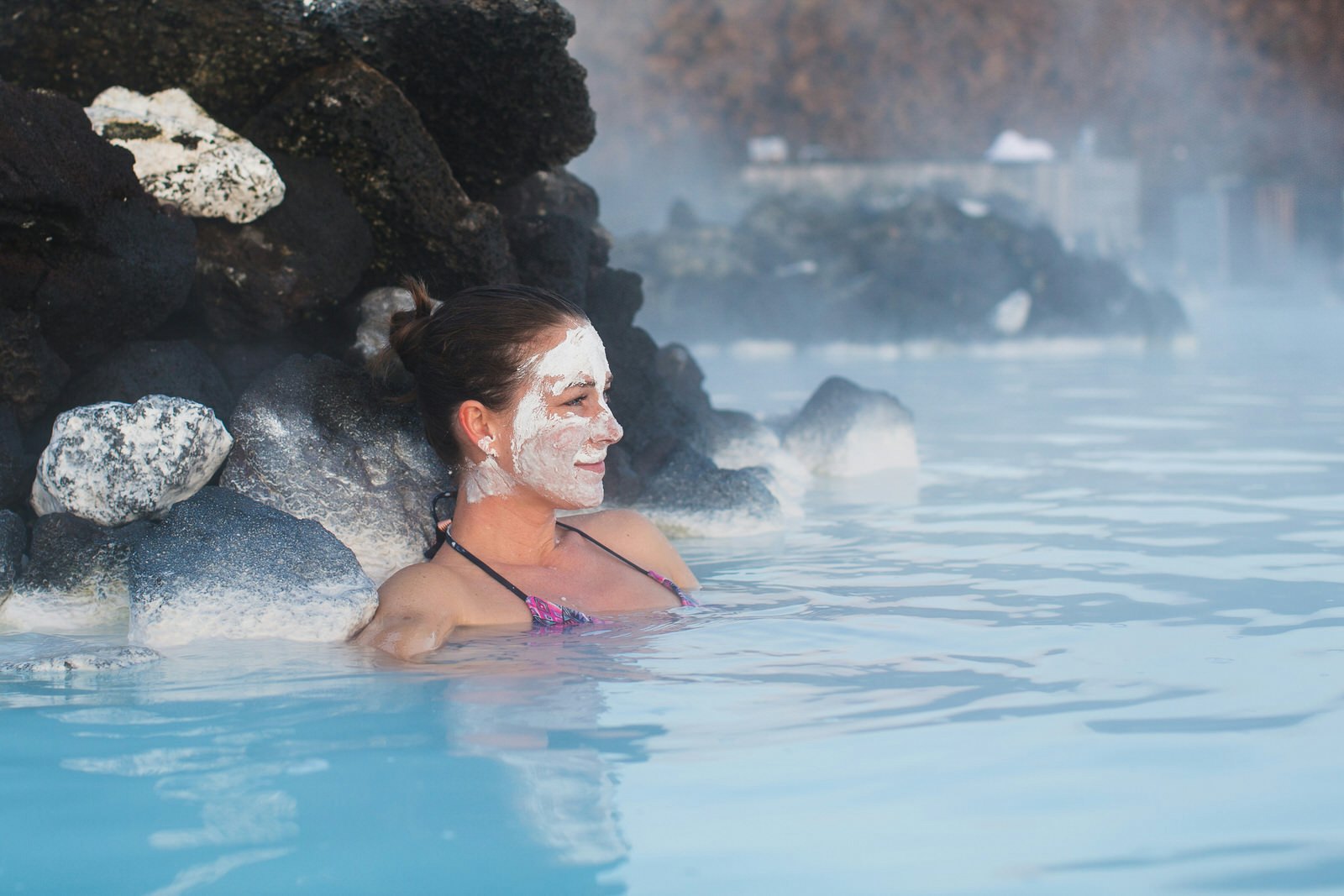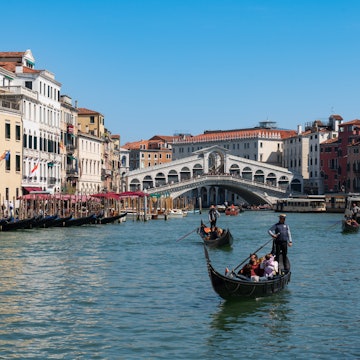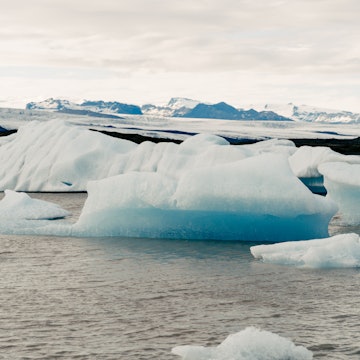

Slap on some silica and relax in the Blue Lagoon's balmy waters © dmitry_islentev / Shutterstock
Iceland’s geological wonders are well known and well visited: waterfalls, mountains, fjords – it's like the country is nature's playground. But the fact that this geology helps Iceland produce virtually all its energy needs is less known – about 70% comes from hydro-electric and 20% from geo-thermal sources. Using nature to produce sustainable energy (and for leisure activities) is something Icelanders are very proud of, and for a visitor there are many opportunities for exploring these natural, useful wonders.

The Reykjanes Peninsula and southern Iceland offer some of the most accessible spots, within easy reach of Reykjavík and Keflavík Airport. Here are some of the highlights, from witch-imprisoning hot springs to the best tomato soup you’ll taste this side of the Arctic Circle.
Mind the gap – the Bridge Between Continents

Let’s start where Iceland itself started, at the meeting point of two tectonic plates. The country’s geology centres on a growing gap in the earth’s surface where two plates, the North American and the Eurasian, are moving apart, splitting Iceland in two and causing much of the volcanic activity the country experiences. The rate of movement is slow, averaging 2.5cm per year, but that’s enough to create earthquakes on a daily basis (more on those later) and the chance to build a bridge that connects two continents. Though not really. While it’s fun to walk across, the truth is that the actual divide between two continents is too big for the bridge to span – you’re really walking across a large fissure, part of the much bigger fissure being constantly created by the plates. But it still feels cool.
Bewitching hot springs

To the south of the bridge, Gunnuhver hot springs are not just hot, they’re smoking. Boiling water and steam shoot out of the ground here while Iceland’s oldest lighthouse watches on from nearby. Legend has it that the ghost of a witch, the eponymous Gunna, who was causing problems in the local area, was lured into and then trapped in one of the vents centuries ago by a priest – noticeboards tell the full story. Today, some locals (carefully) put the power of the springs’ heat to culinary use by baking sweet, tasty bread in the smaller vents.
Blissing out at the Blue Lagoon

The most famous geological wonder on the whole Reykjanes Peninsula is not somewhere to see energy being produced but rather somewhere to replenish your own energy supplies with a spot of relaxation in a magical outdoor pool. This is not, however, a natural phenomenon. The Blue Lagoon was created accidentally when overflow water from a local power plant formed a pool that grew in size and began to draw visitors who claimed it had skin-healing properties. Today it’s Iceland’s most popular attraction, and yet despite its popularity the Blue Lagoon still feels special. Even when it’s busy, you can find a quiet corner to enjoy the perfect-temperature water (kept at a constant 38°C/100°F) having smothered your face in a silica mask that will leave your skin silky smooth. To prolong your relaxation eat in the excellent on-site restaurant, Lava.
Harnessing the H2O

South from Þingvellir National Park (site in AD 930 of the world’s first democratic parliament, the Alþingi) and across Þingvallavatn (Iceland’s largest lake), three hydroelectric power stations (out of a national total of 15) use water from the River Sóg to provide electricity for this area. One of them, Ljósafoss, is open to visitors. Built in 1937, you can get a look at the original turbines and, more entertainingly, explore the on-site museum where you get to use your own body to produce energy with a series of interactive displays. One involves running into a panel to see how much power your body creates – throwing yourself against a wall has never been so much fun. And, of course, educational.
You say tomato, I say geothermally heated greenhouse fruit

At Friðheimar farm you don’t just see the power of nature at work, you can eat it. Since 1995 Knútur and Helena have developed their family business, using naturally heated water to power the farm’s greenhouses to the point where they average a ton of crops per day. The main produce is tomatoes, grown year-round in rows of towering plants – an odd sight in the depths of an Icelandic winter – and served up in a delicious homemade soup that comes with equally delicious, equally homemade breads. Proximity to the Golden Circle and its many attractions means the farm is a popular spot with tour groups so book ahead for lunch or come outside usual eating hours.
Iceland's 'magma' opus

Right in the middle of Iceland’s most volcanically active area, and with a view of Mount Hekla (eruption regularity: every decade or so), LAVA couldn’t have picked a more suitable location for its exhibition on volcanoes and how they affect Iceland on a daily basis. A huge map and screens show where activity is concentrated and how many earthquakes have happened in the last 24 hours (generally a lot). Further sections use excellent models and interactive displays to explain the physics, and a movie shows recent eruptions. One of the most jawdropping exhibits is the huge, ceiling-scraping model of the magma pool sitting right under the country, bubbling away and ready to burst out at any point.
Clifton travelled to Iceland with support from Promote Iceland (Inspired By Iceland). Lonely Planet contributors do not accept freebies in exchange for positive coverage.
















